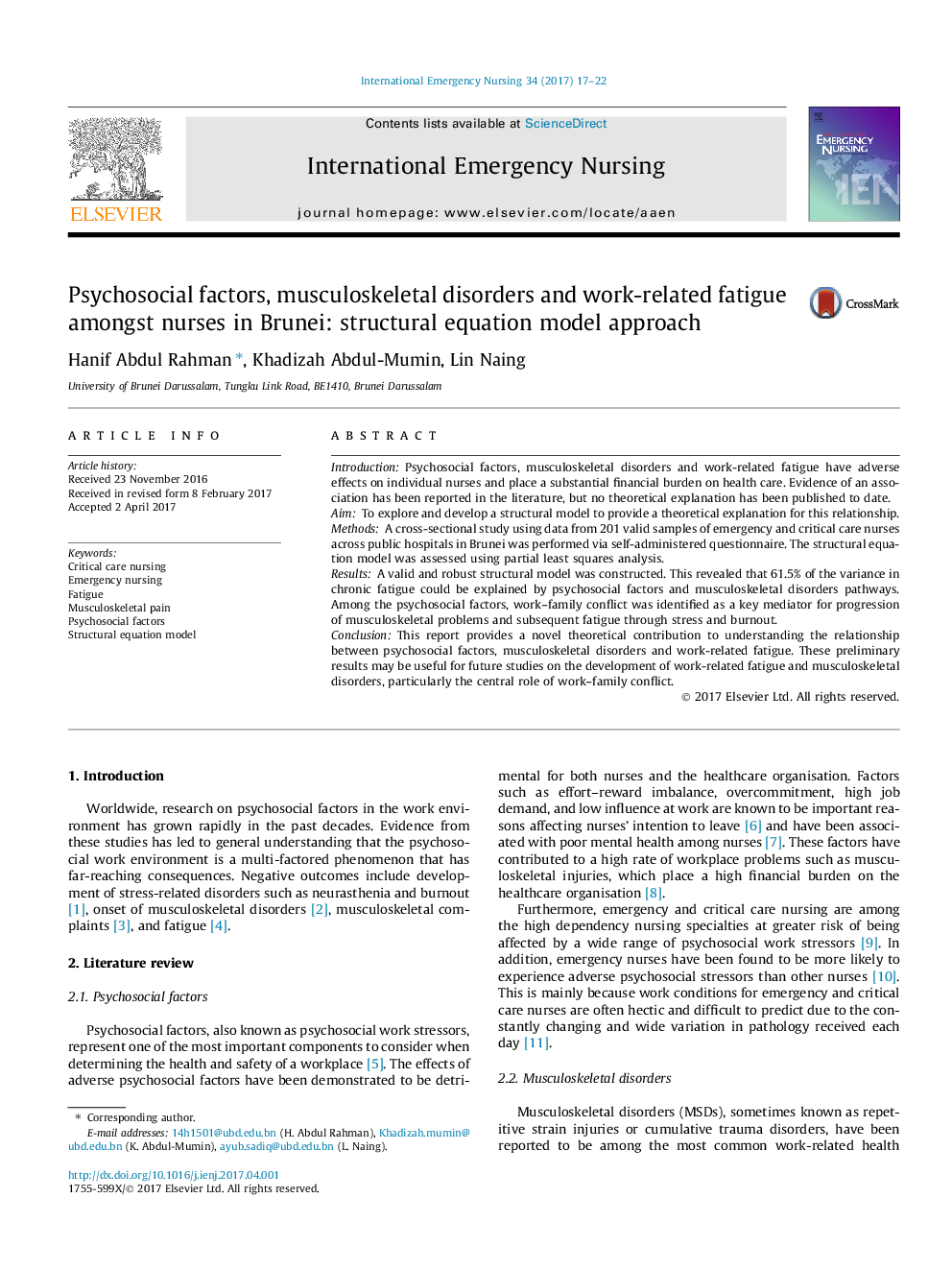| Article ID | Journal | Published Year | Pages | File Type |
|---|---|---|---|---|
| 5563023 | International Emergency Nursing | 2017 | 6 Pages |
â¢Structural model showed significant relationship in psychosocial, MSD and fatigue.â¢61.5% of the variance for chronic fatigue was explained in the structural model.â¢Work-family conflict was central and key mediator within the relationship.â¢Structural model also identified key factors for stress, burnout, and low back pain.
IntroductionPsychosocial factors, musculoskeletal disorders and work-related fatigue have adverse effects on individual nurses and place a substantial financial burden on health care. Evidence of an association has been reported in the literature, but no theoretical explanation has been published to date.AimTo explore and develop a structural model to provide a theoretical explanation for this relationship.MethodsA cross-sectional study using data from 201 valid samples of emergency and critical care nurses across public hospitals in Brunei was performed via self-administered questionnaire. The structural equation model was assessed using partial least squares analysis.ResultsA valid and robust structural model was constructed. This revealed that 61.5% of the variance in chronic fatigue could be explained by psychosocial factors and musculoskeletal disorders pathways. Among the psychosocial factors, work-family conflict was identified as a key mediator for progression of musculoskeletal problems and subsequent fatigue through stress and burnout.ConclusionThis report provides a novel theoretical contribution to understanding the relationship between psychosocial factors, musculoskeletal disorders and work-related fatigue. These preliminary results may be useful for future studies on the development of work-related fatigue and musculoskeletal disorders, particularly the central role of work-family conflict.
